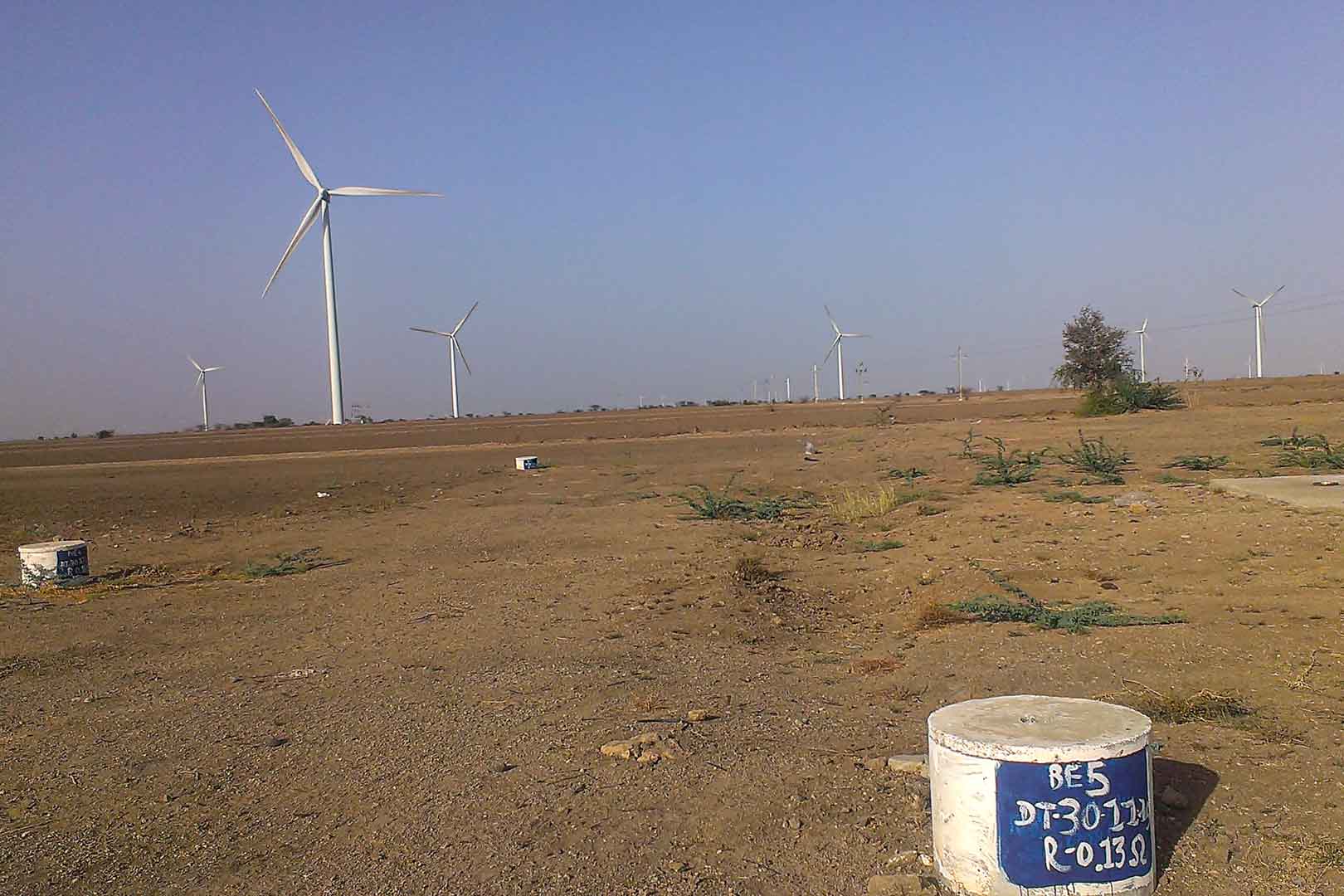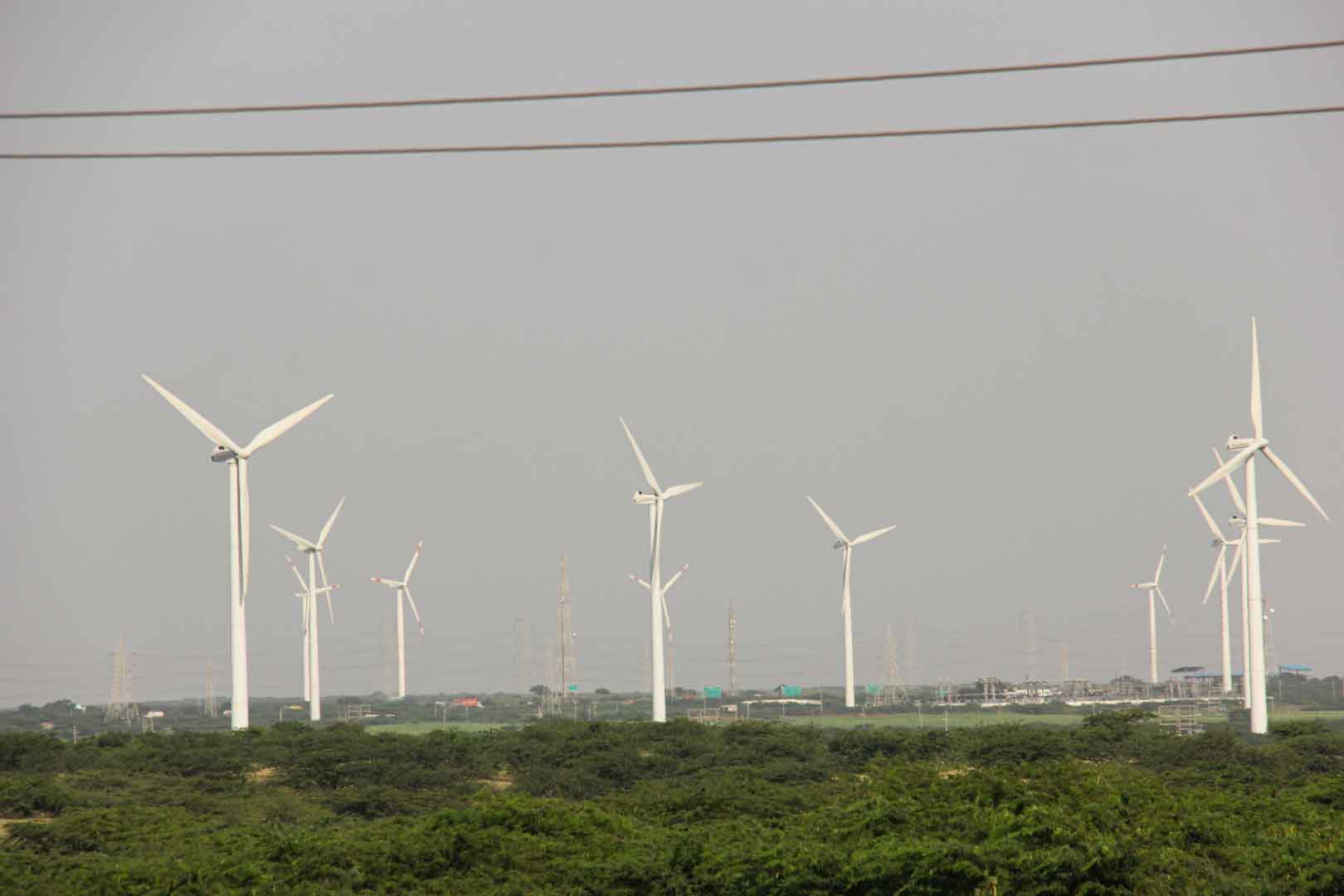Using Gujarat's potential for wind energy
The purpose of the 91.8 MW wind farm in Gujarat uses the region's natural wind resources for power generation and thus alleviate electricity shortages in India's Northern, Eastern, Western, and North-Eastern regions. The generated electricity is delivered to NEWNE grid (now Unified Indian Grid), which is otherwise mainly fed by fossil fuel-fired power plants.
Wind power is considered environmentally friendly as it replaces some of the fossil fuel-dominated electricity generation mix in the grid and contributes to reduce carbon emissions. The project activity generates electricity by using the kinetic energy of flowing wind, a process that does not cause any greenhouse gas emissions. The electricity produced by project displaces an equivalent amount of power from the existing grid, which is currently dominated by fossil fuel-fired power plants. The wind farm is located about 20 km South East from Samakhiyali in the Kutch district which belongs to the state of Gujarat. Besides reducing carbon emissions, it helps stimulate the local economy through improvied energy supply.

As the name suggests, wind turbines use the power of the wind to generate energy. During this process, a generator located inside the wind turbine converts kinetic energy into electrical energy. As energy is still mainly generated from fossil fuels in many areas around the world, clean wind energy can replace some of this fossil, high-emission energy and verifiably save CO2 emissions.
In most cases, the sustainably generated electricity from the wind power projects is fed into a regional power grid, which diversifies the power supply and improves energy security in regions that are frequently affected by power shortages and outages. A project often creates increased job opportunities for the local population and the area can be used for additional activities, such as agriculture. Wind power projects make an important contribution to a clean energy supply worldwide and contribute to sustainable development with respect to the UN Sustainable Development Goals (SDGs). Wind energy projects in the ClimatePartner portfolio are registered with international standards.
Explore our projects
Biochar for Climate Action, Healthy Soils, and Better Harvests

A certified climate project combined with additional commitment

Expansion of renewable energy generation in Asia

Ceramic water filters save CO2 and improve health

Improved cookstoves worldwide – for better health and cleaner air

A certified climate project combined with additional commitment

Powering access to renewable energy in Africa

A certified climate project combined with additional commitment

Restored ecosystems remove carbon

Turning degraded farmlands into healthy ecosystems

Improved cookstoves - better for health and the environment




